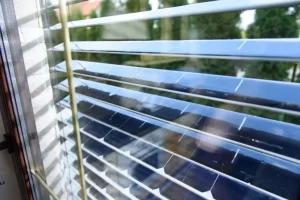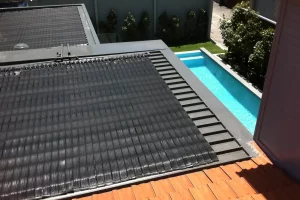In the quest for sustainable energy sources, solar power has emerged as a shining star, offering a clean and abundant solution to meet our electricity needs. The sun, with its powerful rays, holds the key to unlocking a renewable energy revolution. But how do we harness its energy and convert it into electricity? In this article, we delve into the fascinating world of solar energy conversion, exploring a range of methods and technologies that pave the way to a brighter, greener future.

6 technologies to make electricity from solar energy
There are several ways to convert solar energy into electricity. Here are the primary ways to convert solar energy to electricity:
- Solar Photovoltaic (PV) Panels. Solar panels consist of multiple solar cells made of semiconductor materials like silicon. When sunlight hits these cells, the photons in the sunlight excite the electrons, generating a flow of electricity. The direct current (DC) electricity produced by the panels can be used immediately or converted into alternating current (AC) electricity using an inverter for use in homes or businesses.
- Concentrated Solar Power (CSP). CSP systems concentrate sunlight using mirrors or lenses onto a receiver, which converts the concentrated sunlight into heat. This heat is then used to generate steam, which drives a turbine connected to a generator to produce electricity. CSP systems are typically used in large-scale power plants and can provide electricity even when sunlight is not available by storing thermal energy in the form of molten salts or other heat storage mediums.
- Solar Thermal Systems. Solar thermal systems use sunlight to generate heat directly. The heat is typically used for space heating, water heating, or industrial processes. In these systems, solar collectors absorb sunlight and transfer the captured heat to a working fluid, which can be used directly or stored for later use.
- Thin-Film Solar Cells. Thin-film solar cells are another type of photovoltaic technology that uses thin layers of semiconductor materials to convert sunlight into electricity. These cells can be integrated into flexible materials, allowing for unique applications such as solar panels on curved surfaces or flexible solar panels.
- Solar Thermoelectric Generators. Solar thermoelectric generators (TEGs) use the temperature difference between sunlight-exposed and shaded areas to generate electricity. TEGs utilize the Seebeck effect, where a temperature gradient across a semiconductor material generates an electric current.
- Solar-Powered Pumps. Solar energy can also be used to power small-scale applications such as water pumps. Solar-powered pumps utilize photovoltaic panels to generate electricity, which is then used to drive the pump and deliver water for irrigation, drinking water supply, or other purposes.
These methods of converting solar energy into electricity provide diverse options for harnessing the power of the sun and can be tailored to different scales, from small-scale residential installations to large-scale solar power plants. The choice of the conversion method depends on factors such as energy requirements, available space, location, and the specific application.
Solar Photovoltaic (PV) Panels
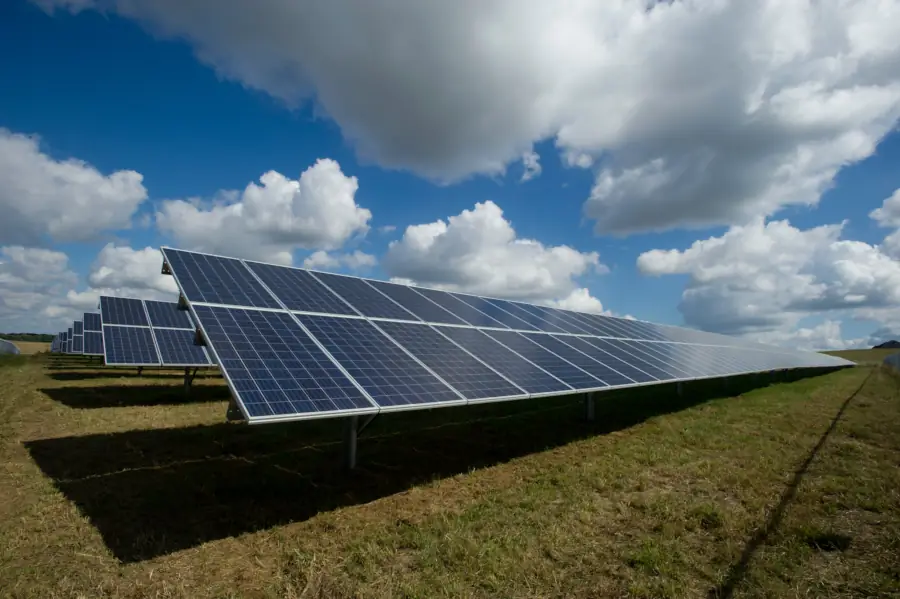
Solar photovoltaic (PV) panels offer numerous advantages as a renewable energy technology, but they also have some limitations. Here are the pros and cons of solar photovoltaic panels:
Solar Photovoltaic (PV) Panels advantages:
- Renewable and Clean Energy. Solar PV panels harness the energy from sunlight, which is an abundant and renewable resource. They produce clean electricity without emitting greenhouse gases, helping to reduce carbon emissions and combat climate change.
- Energy Independence. By installing solar panels, individuals and businesses can generate their own electricity, reducing reliance on traditional energy sources and utility companies. This independence provides greater control over energy production and can lead to cost savings.
- Reduced Energy Bills. Solar panels can significantly lower or eliminate electricity bills, especially in areas with ample sunlight. Over time, the financial savings can offset the initial investment and provide long-term cost benefits.
- Long Lifespan and Low Maintenance. Solar panels are durable and have a long lifespan, typically lasting 25 to 30 years or more with proper maintenance. They require minimal upkeep, usually limited to occasional cleaning and inspections.
- Scalability. Solar PV systems can be scaled to meet different energy needs. From small residential installations to large-scale solar farms, the technology is adaptable to various applications and can be expanded or modified as required.
- Silent and Non-Intrusive. Solar panels operate silently and have no moving parts, resulting in a noise-free energy generation process. Their installation does not cause significant disturbances to the surrounding environment.
Solar Photovoltaic (PV) Panels Cons:
- Upfront Cost. The initial investment for purchasing and installing solar PV panels can be relatively high. However, the cost of solar panels has been decreasing over the years, making them more accessible and cost-effective in the long run.
- Weather Dependency. Solar panels require sunlight to generate electricity, so their efficiency is dependent on weather conditions. Cloudy days or shading from trees or buildings can reduce the amount of energy produced. However, advancements in technology and energy storage systems help mitigate this limitation.
- Land and Space Requirements. Solar PV systems require adequate space for installation, which may be a constraint for properties with limited rooftop or land availability. However, innovative solutions like solar canopies or floating solar farms are being developed to utilize alternative spaces.
- Energy Storage. Solar panels generate electricity during the day, but energy demands may vary throughout the day, including times when sunlight is not available. Incorporating energy storage systems, such as batteries, can address this issue by storing excess energy for use during low-production periods.
- Environmental Impact. While solar panels themselves have minimal environmental impact, the production and disposal of PV panels can involve the use of certain materials and chemicals. However, efforts are being made to improve the sustainability of panel manufacturing and recycling processes.
- Grid Dependency (without energy storage). In grid-tied systems without energy storage, solar PV systems may still depend on the grid for electricity during times of low production. This means that if there is a power outage, the solar panels alone may not provide electricity unless a backup power source, like batteries, is installed.
Despite these limitations, the benefits of solar photovoltaic panels, including renewable energy generation, cost savings, and environmental advantages, make them a popular choice for residential, commercial, and utility-scale applications. As technology continues to advance, the efficiency and affordability of solar panels are improving, further enhancing their appeal as a clean energy solution.
Which companies make Solar Photovoltaic (PV) Panels
There are numerous companies around the world that manufacture solar photovoltaic (PV) panels. Here are some well-known companies in the solar industry:
- JinkoSolar. JinkoSolar is one of the largest solar panel manufacturers globally, offering a wide range of high-quality PV modules for residential, commercial, and utility-scale installations.
- Canadian Solar. Canadian Solar is a leading vertically integrated manufacturer of solar PV modules and a provider of solar energy solutions. They offer a diverse range of solar panels suitable for various applications.
- Trina Solar. Trina Solar is another prominent solar panel manufacturer known for its high-performance PV modules. They produce solar panels for residential, commercial, and utility-scale projects, focusing on efficiency and reliability.
- SunPower. SunPower is a well-established solar energy company that designs and manufactures high-efficiency solar panels. They are known for their Maxeon® solar cell technology, which delivers impressive performance and durability.
- First Solar. First Solar specializes in thin-film solar module manufacturing. They have pioneered cadmium telluride (CdTe) thin-film technology and provide solar panels for utility-scale projects worldwide.
- Hanwha Q Cells. Hanwha Q Cells is a global solar company that manufactures high-quality PV modules. They are known for their advanced cell technology, durability, and energy efficiency.
- LG Electronics. LG Electronics, a renowned consumer electronics brand, also produces solar panels. They offer a range of high-performance modules designed for residential and commercial applications.
- REC Group. REC Group is a leading European solar panel manufacturer known for its innovative and high-quality products. They offer both monocrystalline and polycrystalline PV panels for residential and commercial installations.
- JA Solar. JA Solar is a Chinese company that manufactures solar PV modules for various applications. They are known for their high-efficiency modules and have a strong presence in the global solar market.
- Longi Solar. Longi Solar specializes in monocrystalline solar panels and is one of the world’s largest manufacturers of monocrystalline wafers. They provide high-efficiency modules for residential, commercial, and utility-scale projects.
These are just a few examples of the many companies involved in the production of solar PV panels. It’s important to note that the solar industry is dynamic, and new companies are continually emerging, driving innovation and competition in the market. When considering solar panel options, it is advisable to research and consult with local solar installers to determine the most suitable panels for specific project requirements.
Concentrated Solar Power (CSP) systems
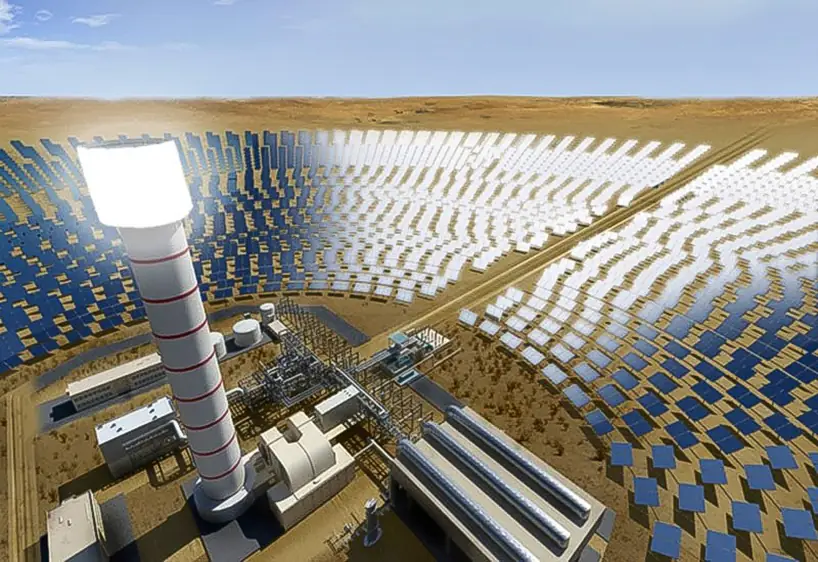
Concentrated Solar Power (CSP) systems offer unique advantages and face specific challenges compared to other renewable energy technologies. Here are the pros and cons of Concentrated Solar Power (CSP):
Concentrated Solar Power (CSP) systems pros:
- Large-Scale Energy Generation. CSP systems can generate significant amounts of electricity, making them suitable for large-scale power generation. They can be built in utility-scale power plants and integrated into existing power grids, contributing to the overall energy supply.
- Energy Storage Capability. CSP systems can incorporate thermal energy storage, allowing the captured solar energy to be stored as heat in the form of molten salts or other mediums. This stored energy can be used to generate electricity even when sunlight is not available, providing a more stable and reliable power output.
- Continuous Power Generation. CSP plants with energy storage can provide continuous power output, including during periods of low solar irradiation or at night. This makes CSP a more reliable source of electricity compared to some other intermittent renewable energy sources like solar PV or wind.
- Flexibility in Design. CSP technology offers flexibility in design, allowing for various configurations such as tower systems, parabolic troughs, or dish/Stirling engines. This versatility enables CSP plants to be tailored to different geographic locations and specific energy needs.
- Job Creation and Economic Benefits. The construction and operation of CSP plants can create job opportunities and stimulate local economies. The development of CSP projects can also support related industries, such as manufacturing, engineering, and maintenance.
- Reduced Environmental Impact. CSP plants produce electricity without direct emissions of greenhouse gases or air pollutants. By displacing fossil fuel-based power generation, CSP systems contribute to mitigating climate change and reducing local air pollution.
Concentrated Solar Power (CSP) systems cons:
- High Capital Cost. CSP systems generally require significant upfront capital investment due to the complex technology and infrastructure involved. The costs associated with constructing and commissioning CSP plants can be higher compared to some other renewable energy technologies.
- Land and Water Requirements. CSP plants typically require substantial land areas for their infrastructure, including solar collectors and power blocks. Additionally, water is often required for cooling and cleaning purposes, which can be a concern in arid regions or where water resources are limited.
- Environmental Impacts. CSP plants may have environmental impacts such as land disturbance during construction and habitat disruption. Water usage in arid regions can also impact local ecosystems and water availability for other purposes. However, advancements in technology and project design are addressing these concerns.
- Transmission and Integration Challenges. CSP plants are often located in remote areas with abundant sunlight, necessitating long-distance transmission of electricity to reach population centers. This can pose challenges in terms of transmission infrastructure and grid integration, requiring additional investments and planning.
- Performance Variability. The efficiency and performance of CSP systems can be affected by weather conditions and solar resource variability. Cloud cover or dust accumulation on solar collectors can reduce the amount of sunlight reaching the system, impacting overall energy production.
- Limited Site Suitability. CSP plants require suitable locations with high direct normal irradiation (DNI) for optimal performance. Not all regions have the necessary solar resource availability or land characteristics to support the installation of CSP systems.
It’s worth noting that CSP technology is continually evolving, and ongoing research and development efforts aim to address some of the challenges associated with this renewable energy technology. The specific pros and cons of CSP depend on factors such as project scale, location, local regulations, and available resources.
Which companies make Concentrated Solar Power (CSP)
Several companies around the world are involved in the manufacturing and development of concentrated solar power (CSP) technologies. Here are some notable companies in the CSP industry:
- Abengoa. Abengoa is a global company that has been at the forefront of CSP development. They have built several CSP plants worldwide and are known for their parabolic trough and tower technologies.
- BrightSource Energy. BrightSource Energy is a leading developer and provider of CSP systems. They specialize in tower-based CSP technology, utilizing concentrated sunlight to produce high-temperature heat for electricity generation.
- ACWA Power. ACWA Power is a developer, owner, and operator of power generation and desalinated water production plants. They have been involved in the development of CSP projects, including parabolic trough and tower technologies.
- eSolar. eSolar is a company that designs and develops modular CSP power plants. They focus on compact heliostat designs and have a unique approach to CSP technology.
- General Electric (GE). GE is a multinational conglomerate involved in various sectors, including energy. They have developed CSP technologies and offer solutions for both parabolic trough and tower systems.
- Siemens Energy. Siemens Energy is a global leader in energy technology, including CSP. They provide steam turbine and generator solutions for CSP plants, contributing to the overall efficiency and performance of the systems.
- Aalborg CSP. Aalborg CSP is a Danish company that specializes in designing and supplying CSP systems for district heating, industrial processes, and power generation. They offer innovative solutions using both parabolic trough and tower technologies.
- TSK Group. TSK Group is a Spanish engineering company that has participated in the development of CSP projects. They provide engineering, procurement, and construction (EPC) services for CSP plants.
- SENER. SENER is an engineering and technology group with expertise in various industries, including energy. They have been involved in the design and construction of CSP projects worldwide.
These companies represent a portion of the diverse players involved in the CSP industry. It’s important to note that the CSP market is continually evolving, with new technologies and companies entering the space. When considering CSP projects, it is advisable to research and consult with experienced industry professionals to identify the most suitable companies and technologies for specific project requirements.
Solar Thermal Systems
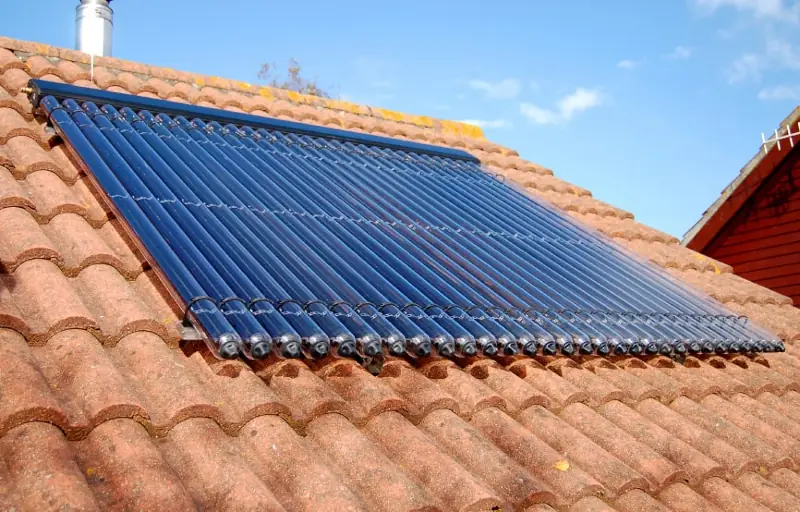
Solar thermal systems, which use sunlight to generate heat directly, have their own set of advantages and disadvantages compared to other renewable energy technologies. Here are the pros and cons of solar thermal systems:
Solar Thermal Systems advantages:
- Efficient Heat Generation. Solar thermal systems can efficiently convert sunlight into heat, making them suitable for various applications such as space heating, water heating, and industrial processes. They can provide direct heat without the need for additional energy conversion steps.
- Cost Savings. Solar thermal systems can significantly reduce energy costs, especially for applications that require substantial heat, such as water heating in residential or commercial settings. By relying on sunlight, they can offset the need for traditional heating fuels or electricity, leading to long-term cost savings.
- Energy Independence. By utilizing solar thermal systems, individuals and businesses can reduce their reliance on fossil fuels or electricity from the grid for heating purposes. This energy independence provides greater control over energy costs and reduces exposure to fuel price fluctuations.
- Environmental Benefits. Solar thermal systems produce heat without greenhouse gas emissions or air pollutants, contributing to reduced carbon footprint and improved air quality. They help mitigate climate change and reduce reliance on fossil fuels, promoting a more sustainable energy solution.
- Long Lifespan and Low Maintenance. Solar thermal systems are durable and have a long lifespan, typically lasting 20 to 30 years or more with proper maintenance. They generally require minimal maintenance, with occasional inspections and possible cleaning of solar collectors.
- Localized Generation. Solar thermal systems can be installed at or near the point of use, reducing transmission losses and improving overall system efficiency. This localized generation can be advantageous for applications like water heating, where the heat is directly utilized at the site.
Solar Thermal Systems disadvantages:
- Seasonal and Weather Dependency. Solar thermal systems rely on sunlight, making their performance subject to seasonal variations and weather conditions. Reduced sunlight during cloudy days or shorter daylight hours in winter can affect the system’s efficiency and heat output.
- Space and Installation Requirements. Solar thermal systems require adequate space for the installation of solar collectors, which can be a limitation in certain settings with limited rooftop or land availability. Additionally, the installation process may involve modifications to existing infrastructure, increasing upfront costs.
- Limited Application Scope. Solar thermal systems are primarily designed for heat generation and may not be suitable for electricity generation. They have a more specific range of applications, such as water heating, space heating, or industrial processes, compared to solar PV systems, which can generate electricity.
- Initial Cost. The upfront cost of installing solar thermal systems can be relatively high, especially for larger-scale applications or custom-designed systems. However, the cost can vary depending on factors such as system size, complexity, and the type of installation.
- Maintenance Considerations. While solar thermal systems generally require minimal maintenance, some components, such as pumps or heat transfer fluids, may need periodic inspection or replacement. Proper maintenance is essential to ensure optimal system performance and longevity.
- Integration with Existing Systems. Integrating solar thermal systems with existing heating infrastructure or systems may require additional considerations and modifications. Proper planning and system design are necessary to ensure compatibility and efficient integration.
It’s important to note that the pros and cons of solar thermal systems can vary depending on the specific application, geographical location, available resources, and system design. Evaluating the feasibility and cost-effectiveness of solar thermal systems for a particular use case requires careful analysis and consideration of these factors.
Which companies make Solar Thermal Systems
Several companies are involved in the manufacturing and development of solar thermal systems. Here are some notable companies in the solar thermal industry:
- Aalborg CSP. Aalborg CSP is a Danish company specializing in the design, engineering, and supply of solar thermal systems. They offer solutions for district heating, industrial processes, and power generation using technologies like parabolic troughs, solar towers, and solar boilers.
- BrightSource Energy. BrightSource Energy, mentioned earlier in the concentrated solar power (CSP) section, also develops solar thermal systems. They focus on tower-based systems that use mirrors to concentrate sunlight and generate high-temperature heat for power production.
- Sunvapor. Sunvapor is a company that develops solar thermal systems for industrial applications. They specialize in solar steam generators that provide heat for various industrial processes, including food processing and chemical manufacturing.
- Rioglass Solar. Rioglass Solar is a global provider of solar thermal receiver tubes used in CSP systems. They manufacture high-performance glass tubes that absorb sunlight and convert it into heat for power generation.
- Absolicon. Absolicon is a Swedish company that designs and manufactures solar thermal systems for heating and cooling applications. Their systems use concentrating solar collectors and thermal storage for sustainable energy solutions.
- Thermax. Thermax, an Indian company, offers a range of solar thermal solutions for water heating, space heating, and industrial processes. Their systems utilize solar collectors and storage tanks to harness solar energy effectively.
- Solarus. Solarus is a Swedish company specializing in hybrid solar thermal systems. They combine solar thermal technology with photovoltaic (PV) modules to generate both heat and electricity, increasing overall system efficiency.
- Soltigua. Soltigua is an Italian company that focuses on solar thermal systems for concentrated solar power (CSP) and industrial applications. They provide heliostats, parabolic troughs, and other components for CSP projects.
- Heliodyne. Heliodyne is a U.S.-based company that manufactures solar thermal systems for residential and commercial applications. They offer solar collectors, heat exchangers, and controls for space heating, hot water production, and pool heating.
These companies represent a range of solar thermal system providers with expertise in different applications and technologies. The solar thermal industry is diverse and continues to evolve, with ongoing advancements in efficiency and cost-effectiveness. When considering solar thermal systems, it is advisable to research and consult with experienced professionals to identify the most suitable companies and solutions for specific project requirements.
Thin-Film Solar Cells
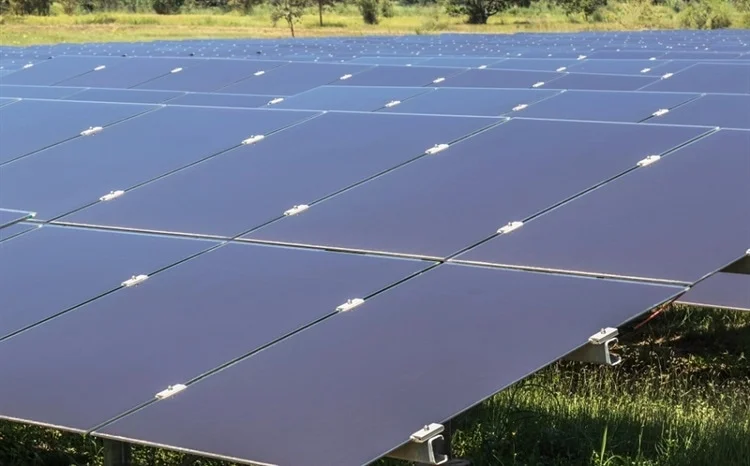
Thin-film solar cells offer unique advantages and face specific challenges compared to traditional crystalline silicon solar cells. Here are the pros and cons of thin-film solar cells:
Thin-Film Solar Cells advantages:
- Flexibility and Versatility. Thin-film solar cells are made of flexible materials, such as amorphous silicon, cadmium telluride, or copper indium gallium selenide. This flexibility allows them to be integrated into a wide range of applications and surfaces, including curved or irregular shapes, building materials, and portable devices.
- Cost-Effective Manufacturing. Thin-film solar cells can be manufactured using less material compared to crystalline silicon cells. They require less energy and lower temperatures during the production process, which can result in lower manufacturing costs and potentially faster production times.
- Low-Light Performance. Thin-film solar cells generally exhibit better performance in low-light or diffuse light conditions compared to crystalline silicon cells. This makes them suitable for applications in regions with less direct sunlight or for installations that may experience shading.
- Wide Bandgap Options. Different thin-film materials have varying bandgaps, allowing for customization and optimization of the solar cells for specific wavelengths of light. This can enhance their efficiency in certain light conditions or for specific applications.
- Amenable to Building Integration. The flexibility and thin profile of thin-film solar cells make them well-suited for building-integrated photovoltaics (BIPV) applications. They can be seamlessly integrated into building materials, such as windows, roofing materials, or facades, enabling solar power generation while maintaining architectural aesthetics.
- Potential for Low-Weight and Portable Applications. Thin-film solar cells’ lightweight nature and flexibility make them suitable for portable and lightweight applications, such as solar chargers, wearable devices, or portable solar panels for outdoor activities.
Thin-Film Solar Cells disadvantages:
- Lower Efficiency. Thin-film solar cells typically have lower energy conversion efficiencies compared to crystalline silicon solar cells. While advancements have been made to improve efficiency, they generally have lower power output per unit area, requiring more surface area for the same power generation.
- Larger Installation Area. Due to their lower efficiency, thin-film solar cells generally require a larger installation area to generate the same amount of electricity as crystalline silicon cells. This can be a limitation in space-constrained applications or installations with limited surface area.
- Degradation Over Time. Some thin-film materials are more prone to degradation and performance decline over time compared to crystalline silicon cells. Factors such as moisture, temperature, and exposure to light can affect their long-term stability and efficiency.
- Limited Commercial Availability. Thin-film solar cell technologies are not as widely available in the market as crystalline silicon cells. The range of thin-film materials and manufacturers may be more limited, which can impact availability, pricing, and the diversity of product options.
- Material Concerns. Certain thin-film materials used in solar cells, such as cadmium telluride or copper indium gallium selenide, may contain elements of environmental concern. Proper manufacturing, handling, recycling, and end-of-life management are important to mitigate potential environmental impacts.
- Technological Maturity. While thin-film solar cell technologies have been developed and commercialized, they may still be considered relatively less mature compared to crystalline silicon technology. This could impact long-term reliability, industry support, and research and development efforts.
It’s worth noting that the performance and characteristics of thin-film solar cells can vary depending on the specific materials, manufacturing techniques, and technological advancements. Ongoing research and development in the field aim to address some of the limitations and improve the overall efficiency and viability of thin-film solar cell technologies.
Which companies make Thin-Film Solar Cells
Here are some notable companies in the thin-film solar cell industry:
- First Solar. First Solar is a leading manufacturer of thin-film solar modules. They specialize in cadmium telluride (CdTe) thin-film technology, known for its cost-effectiveness and high efficiency in real-world conditions.
- Hanergy. Hanergy is a global clean energy company that produces thin-film solar cells. They focus on copper indium gallium selenide (CIGS) thin-film technology and have developed flexible and lightweight modules for various applications.
- Solar Frontier. Solar Frontier is a manufacturer of copper indium selenium (CIS) thin-film solar modules. They are known for their high conversion efficiency and performance in real-world conditions, particularly in low-light environments.
- MiaSolé. MiaSolé is a producer of flexible thin-film solar modules using copper indium gallium selenide (CIGS) technology. They specialize in lightweight and flexible solar modules suitable for a range of applications.
- Heliatek. Heliatek is a German company that focuses on organic solar cells. They develop flexible and transparent solar films based on organic semiconductor materials, offering innovative solutions for building integration and other applications.
- Nanosolar. Nanosolar is a company that has developed thin-film solar cells using a proprietary nanoparticle ink-based printing process. They aim to produce cost-effective and efficient thin-film solar modules for various applications.
- Solaria. Solaria is a manufacturer of high-efficiency crystalline silicon solar panels with an embedded thin-film architecture. Their modules combine the advantages of both technologies, providing enhanced power output and aesthetics.
- Solibro. Solibro, a subsidiary of Hanergy, is a manufacturer of copper indium gallium selenide (CIGS) thin-film solar modules. They produce modules with high energy efficiency and offer customization options for specific applications.
- Ascent Solar. Ascent Solar is a company specializing in flexible thin-film solar modules. They utilize copper indium gallium selenide (CIGS) technology and focus on portable and lightweight solar solutions.
These companies represent a portion of the players involved in the thin-film solar cell industry. It’s important to note that the thin-film solar technology landscape is continually evolving, with ongoing research and development efforts to improve efficiency and reduce costs. When considering thin-film solar solutions, it is advisable to research and consult with industry professionals to identify the most suitable companies and products for specific project requirements.
Solar Thermoelectric Generators
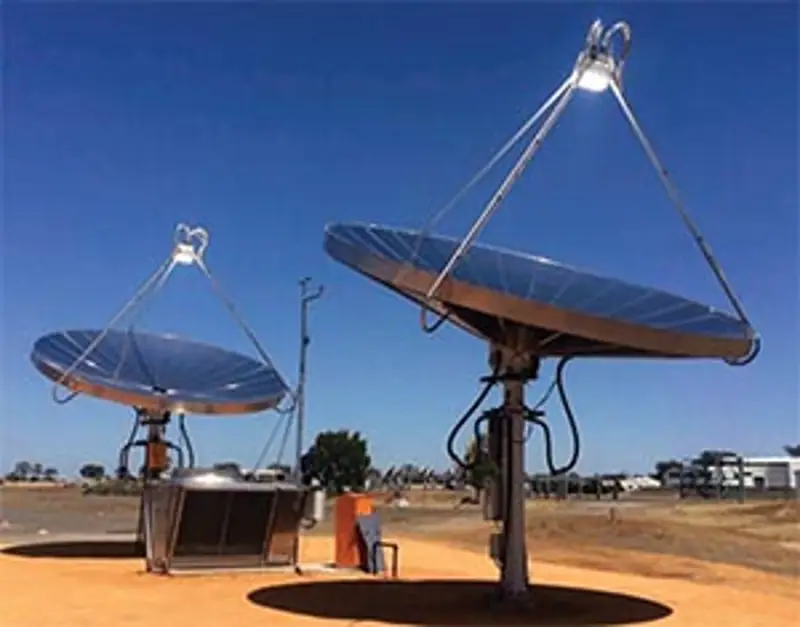
Solar thermoelectric generators (TEGs) utilize the Seebeck effect to directly convert solar energy into electricity. Here are the pros and cons of solar thermoelectric generators:
Solar Thermoelectric Generators pros:
- Silent and Vibration-Free Operation. Solar thermoelectric generators have no moving parts, resulting in silent operation. This makes them suitable for applications where noise and vibrations are a concern, such as in residential areas or sensitive environments.
- Scalability and Modularity. TEGs can be easily scaled up or down to match the required power output. They can be modular in design, allowing for flexible installation and easy expansion as needed.
- Durability and Long Lifespan: TEGs are solid-state devices with no mechanical components, making them robust and durable. They can withstand harsh environmental conditions and have a long lifespan, requiring minimal maintenance.
- No Need for Direct Sunlight. Unlike solar panels that require direct sunlight, TEGs can generate electricity from both direct sunlight and ambient heat. This allows them to operate even in partially shaded or low-light conditions, expanding their potential applications.
- Wide Temperature Range. TEGs can operate across a wide temperature range, from low-grade heat sources to high-temperature applications. This versatility makes them suitable for various heat recovery and waste heat utilization scenarios.
- Reliability in Remote Areas. Solar thermoelectric generators can provide reliable power generation in remote locations where access to conventional power sources may be limited or impractical. They can utilize available heat sources, such as solar thermal collectors or waste heat from industrial processes.
Solar Thermoelectric Generators cons:
- Low Efficiency. TEGs currently have lower efficiency compared to other solar energy conversion technologies, such as solar panels. The conversion efficiency of TEGs is typically lower due to the thermoelectric materials’ limited ability to convert heat into electricity.
- Cost Considerations. The cost of thermoelectric materials, especially those with high efficiency, can be relatively high, which may impact the overall cost-effectiveness of TEG systems. However, advancements in material research and manufacturing processes are ongoing to address this challenge.
- Heat Source Dependency. TEGs require a temperature difference between the hot and cold sides to generate electricity. Therefore, they need a consistent and substantial heat source to operate efficiently. In some cases, additional heat sources or thermal management systems may be necessary to optimize performance.
- Complexity of Heat Management. TEGs require effective heat management to maintain the temperature gradient across the device. This may involve the use of heat sinks, insulation, or cooling systems to prevent overheating or heat loss, adding complexity to the system design.
- Size and Power Output Limitations. TEGs typically generate low power outputs compared to other solar technologies. This limits their applicability to low-power or niche applications, and they may not be suitable for high-power demands or grid-connected systems without combining multiple TEG modules.
- Efficiency Decline at High Temperatures. Some thermoelectric materials used in TEGs experience a decrease in efficiency at higher operating temperatures. This limits the maximum temperature at which TEGs can operate effectively and can affect their overall performance in high-temperature environments.
Solar thermoelectric generators have unique characteristics that make them suitable for specific applications, such as waste heat recovery or remote power generation. However, their lower efficiency, cost considerations, and heat management requirements need to be carefully evaluated to determine their suitability for a particular use case. Ongoing research and technological advancements aim to improve the efficiency and cost-effectiveness of TEGs, expanding their potential in the renewable energy landscape.
Which companies make Solar Thermoelectric Generators
Solar thermoelectric generators (TEGs) are a specialized technology, and the number of companies specifically focused on their manufacturing is relatively limited. However, there are a few companies involved in the development and production of solar thermoelectric generators. Here are a few notable examples:
- Alphabet Energy. Alphabet Energy, now a subsidiary of Ener-Core Inc., has been actively involved in the development of thermoelectric technologies, including solar thermoelectric generators. They specialize in developing efficient and scalable thermoelectric solutions for waste heat recovery and power generation.
- Gentherm. Gentherm is a global company that specializes in thermal management technologies, including thermoelectric solutions. While they are not solely focused on solar thermoelectric generators, they have developed thermoelectric modules suitable for solar energy conversion applications.
- Evident Thermoelectrics. Evident Thermoelectrics is a company that focuses on developing advanced thermoelectric materials and devices, including solar thermoelectric generators. They aim to create highly efficient and cost-effective thermoelectric solutions for renewable energy applications.
- SoliTek. SoliTek, a Lithuanian company, specializes in the development and production of advanced solar energy technologies. They have been involved in the research and development of solar thermoelectric generators, aiming to harness solar heat for power generation.
It’s worth noting that solar thermoelectric generators are a relatively niche technology, and the commercial availability of off-the-shelf products may be limited. However, ongoing research and development efforts in the field of thermoelectric materials and systems may lead to advancements and expanded options in the future.
Solar-Powered Pumps
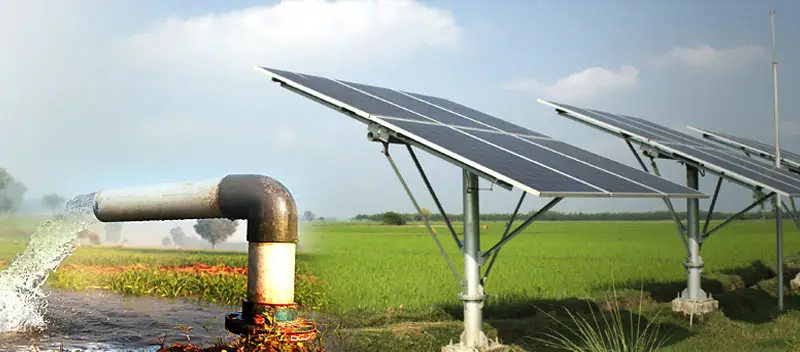
Solar-powered pumps offer several advantages and have some limitations compared to conventional pumps. Here are the advantages and disadvantages of solar-powered pumps:
Solar-Powered Pumps advantages:
- Energy Efficiency. Solar-powered pumps utilize renewable energy from the sun, making them environmentally friendly and energy-efficient. They reduce reliance on grid electricity or fossil fuels, resulting in lower operational costs and carbon emissions.
- Cost Savings. Solar-powered pumps eliminate or significantly reduce electricity or fuel costs associated with pumping water. Once installed, solar energy is freely available, making the operation of solar pumps more cost-effective in the long run, especially in remote or off-grid areas where extending power lines is expensive.
- Independence from Grid Infrastructure. Solar-powered pumps can operate independently of the grid, making them suitable for remote locations or areas with unreliable or inaccessible grid power. They provide a decentralized water pumping solution, reducing dependence on centralized infrastructure.
- Scalability and Modularity. Solar-powered pumps are scalable and modular, allowing for easy installation and expansion. Additional solar panels and pump units can be added to increase water pumping capacity as needed.
- Low Maintenance. Solar-powered pumps have fewer moving parts compared to conventional pumps, resulting in lower maintenance requirements. They are generally durable and have longer lifespans, requiring minimal upkeep.
- Water Conservation. Solar-powered pumps can be designed with water conservation features, such as variable speed drives or smart control systems. This allows for optimized water usage, preventing over-pumping and reducing water waste.
Solar-Powered Pumps disadvantages:
- Weather Dependency. Solar-powered pumps are dependent on sunlight availability, which can vary depending on weather conditions and seasonal changes. Reduced sunlight due to clouds, fog, or shading can affect the pump’s performance and water pumping capacity.
- Initial Investment. The upfront cost of purchasing and installing a solar-powered pump system can be higher compared to conventional pumps. This includes the cost of solar panels, control equipment, batteries (if used for energy storage), and installation expenses. However, the long-term cost savings from reduced energy bills can offset the initial investment.
- Space Requirement. Solar panels require sufficient space for installation to capture sunlight effectively. Large solar arrays may be necessary to generate enough power for high-capacity pumping, which can be a challenge in areas with limited available space.
- Storage and Backup Considerations. Solar-powered pumps may require energy storage systems, such as batteries, to store excess energy generated during the day for use during periods of low sunlight or at night. The additional cost and maintenance of energy storage should be considered in the overall system design.
- System Complexity. Solar-powered pump systems involve multiple components, including solar panels, inverters, controllers, and pumps. This complexity may require specialized expertise for installation, operation, and maintenance.
- System Sizing and Performance. Proper sizing of the solar panel array and pump capacity is crucial for optimal system performance. Mismatched system sizing can result in inefficient operation, underutilization of solar energy, or insufficient pumping capacity.
When considering the use of solar-powered pumps, it’s essential to assess the specific water pumping requirements, site conditions, and available solar resource to determine the feasibility and cost-effectiveness of the system. Overall, solar-powered pumps offer a sustainable and reliable water pumping solution, particularly in areas with abundant sunlight and limited access to grid electricity or fuel sources.
Which companies make Solar Powered Pumps
Several companies manufacture solar-powered pumps, offering efficient and sustainable solutions for various water pumping needs. Here are some notable companies in the solar-powered pump industry:
- Lorentz. Lorentz is a leading manufacturer of solar-powered water pumps. They offer a wide range of solar pumping systems for various applications, including irrigation, livestock watering, and water supply for remote areas.
- Grundfos. Grundfos is a well-known global pump manufacturer that also produces solar-powered pumps. Their solar water pumps provide reliable and efficient water supply solutions for off-grid and remote locations.
- Franklin Electric. Franklin Electric is a company that offers solar-powered water pumping systems. They provide a range of solar submersible pumps designed for agricultural, residential, and industrial applications.
- Shakti Pumps. Shakti Pumps is an Indian company specializing in solar-powered water pumps. They manufacture solar submersible pumps and surface pumps for agricultural irrigation, domestic water supply, and other water pumping needs.
- CRI Pumps. CRI Pumps is an Indian pump manufacturer that produces solar-powered pumps. They offer solar submersible pumps, solar surface pumps, and solar booster pumps for various applications.
- Sun Pumps. Sun Pumps is a U.S.-based company that focuses on solar-powered water pumping systems. They provide submersible and surface solar pumps suitable for applications like livestock watering, irrigation, and off-grid water supply.
- Dankoff Solar Pumps. Dankoff Solar Pumps is a company specializing in solar-powered water pumps. They offer a range of solar submersible and surface pumps designed for various water pumping applications.
- Solariver. Solariver is a manufacturer of solar-powered water pumps and accessories. They provide solar submersible pumps, solar fountain pumps, and solar-powered well pump kits for residential and commercial use.
- Tata Power Solar. Tata Power Solar, part of the Tata group, offers solar-powered water pumping solutions. They provide solar submersible pumps and surface pumps for agricultural and rural water supply.
- SolarBee. SolarBee, a company under Medora Corporation, focuses on solar-powered water circulation and aeration systems. Their solar-powered pumps are used in applications such as wastewater treatment, lake and pond management, and agricultural water management.
These companies represent a selection of manufacturers involved in the production of solar-powered pumps. When considering solar-powered pump options, it is advisable to research and consult with local suppliers or experts to identify the most suitable products for specific water pumping requirements and geographic locations.
Which is the most efficient way to convert solar energy to electricity
Currently, the most efficient way to convert solar energy into electricity is through the use of high-efficiency solar photovoltaic (PV) panels. Solar PV technology directly converts sunlight into electricity using the photovoltaic effect.
The efficiency of solar PV panels is measured by their ability to convert sunlight into usable electrical energy. The efficiency is expressed as a percentage, representing the ratio of the amount of electricity produced to the amount of sunlight received. Higher efficiency means that more sunlight is effectively converted into electricity.
It’s important to note that the efficiency of solar PV panels can vary depending on factors such as the type of technology used, the quality of the panels, operating conditions, and installation configuration. Additionally, other solar energy conversion technologies, such as concentrated solar power (CSP) or solar thermal systems, have different efficiency metrics and applications but are generally less efficient in converting solar energy into electricity compared to solar PV panels.
It’s worth mentioning that while solar PV panels are currently the most efficient way to convert solar energy into electricity, the overall efficiency of the entire solar energy system, including other components such as inverters, wiring, and balance-of-system components, should also be considered to maximize the system’s overall performance and energy production.

